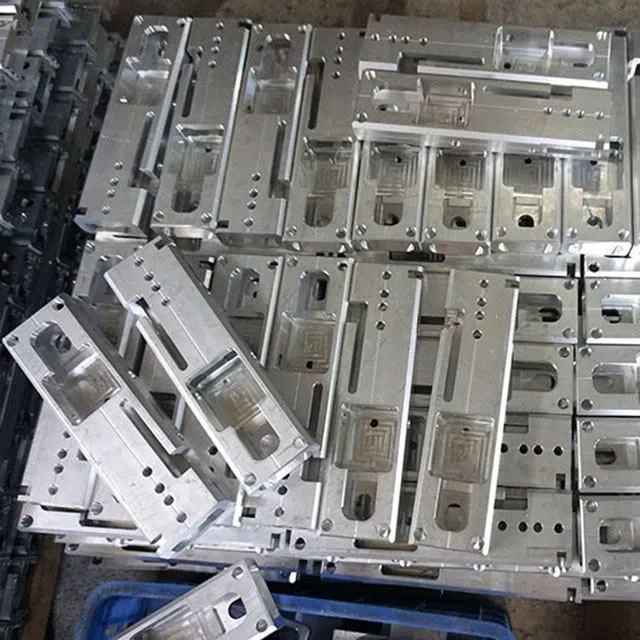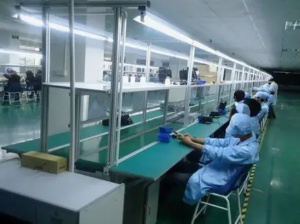
Indispensable part of laser cutting machine
In the laser cutting process, the distance between the cutting head and the workpiece and the perpendicularity between the nozzle and the workpiece surface are two extremely important factors. It directly affects the processing quality, so in order to improve the cutting quality and reduce the generation of waste, it is necessary to install some special sensors on the cutting head to ensure that it can produce stable and consistent cutting quality, and can increase the process safety.
In the laser cutting process, the distance between the cutting head and the workpiece and the perpendicularity between the nozzle and the workpiece surface are two extremely important factors. It directly affects the processing quality, so in order to improve the cutting quality and reduce the generation of waste, it is necessary to install some special sensors on the cutting head to ensure that it can produce stable and consistent cutting quality, and can increase the process safety.
Displacement measurement is the most basic measurement work. According to whether the sensor is in contact with the workpiece to be measured, the displacement sensor can be divided into two types: contact type and non-contact type. Compared with contact type sensors, non-contact type sensors guarantee high resolution. At the same time, it has fast dynamic response, low hysteresis error, or even zero.
Non-contact sensors, sometimes called proximity sensors (proximity sensor), the earliest application is the proximity switch, that is, when the detected object is close to a certain distance from the sensitive probe, a switch signal is given. The current proximity sensor has developed to not only can Detect the presence or absence of an object, and can give the distance of the object from the sensitive probe, and can provide information about the shape and spatial position of the workpiece, because it can be used to measure the displacement of moving objects, so this type of sensor is also called non-contact sensor. Contact displacement sensors, commonly used displacement sensors include hysteresis displacement sensors, eddy current displacement sensors, capacitive displacement sensors, inductor displacement sensors, etc.
According to the principles of various sensors, capacitive sensors have high sensitivity and have the following characteristics:
1. Simple structure, strong adaptability, easy to manufacture, easy to ensure high accuracy, can be made into small size sensor to achieve special measurement, can work in harsh environments such as high and low temperature, strong radiation and strong magnetic fields, and can withstand high pressure , high shock, overload, etc.
2. Good dynamic response, because the electrostatic attraction between the plates is very small, the required energy is very small, and the movable part can be made very small and thin, so its natural frequency is very high, and the dynamic response time is short, which can be used in several It operates at a frequency of MHz and is especially suitable for dynamic measurements.
3. The larger relative change is only limited by the linear region, and its value can reach 100% or more, which can ensure the resolution and measurement range of the sensor.
4. The heat generation is small, and its own temperature coefficient is small. Since the capacitance value of the capacitive sensor has nothing to do with the electrode material, a material with a low temperature coefficient can be selected, which can ensure good stability when the external temperature is stable.
To sum up, it can be seen that these advantages are very suitable for laser processing. For laser cutting heads, capacitive displacement sensors are the most suitable.
Structural Analysis of Capacitive Sensors
The displacement capacitive sensor for laser is combined with the nozzle body. The sensor is composed of two different metal conical shells inside and outside. The middle of the inner and outer shells is a ceramic insulating medium. The outer shell is selected to be grounded and insulated from the inner layer, and the sensor is shielded when working The lower part of the inner shell on one side of the tapered tip is connected to a ring-shaped metal sheet to be insulated from the outer layer. The ring-shaped metal sheet and the metal workpiece constitute two polar plates of a capacitive sensor, and a channel is drawn from the inner shell for signal When the acquisition system is connected to the sensor, it passes through this channel in turn. The inner layer of the metal can make the emitter plate (ring metal sheet) electrified. The upper end of the entire probe is connected to the laser processing machine. When working, the laser beam passes through the inner metal shell and passes through the laser cutting machine. During the process, the change of the distance from the nozzle to the workpiece has a great influence on the cutting quality. If the distance is too small, a huge recoil pressure will act on the lens, causing the lens to be hit or attached by slag particles, causing damage to the lens. The end is very easy to be eroded by molten slag, which affects the roundness of the nozzle hole and destroys the symmetry of the cutting direction. If the working distance is too small, the airflow will flow at an over-expanded supersonic speed, and shock waves are easily generated at the nozzle gap. When it becomes smaller, the shock wave generation area expands towards the outer diameter of the nozzle, the gas pressure will fluctuate, and the asymmetry of the pressure will change the gas density, forming a density gradient field. Its strength also increases with the increase of pressure, and when the nozzle gap is too large, the gas nozzle will be too far away from the workpiece, and the air pressure in the nozzle gap will decrease, resulting in overheating of the workpiece surface, increasing the melting zone, and widening the kerf.
